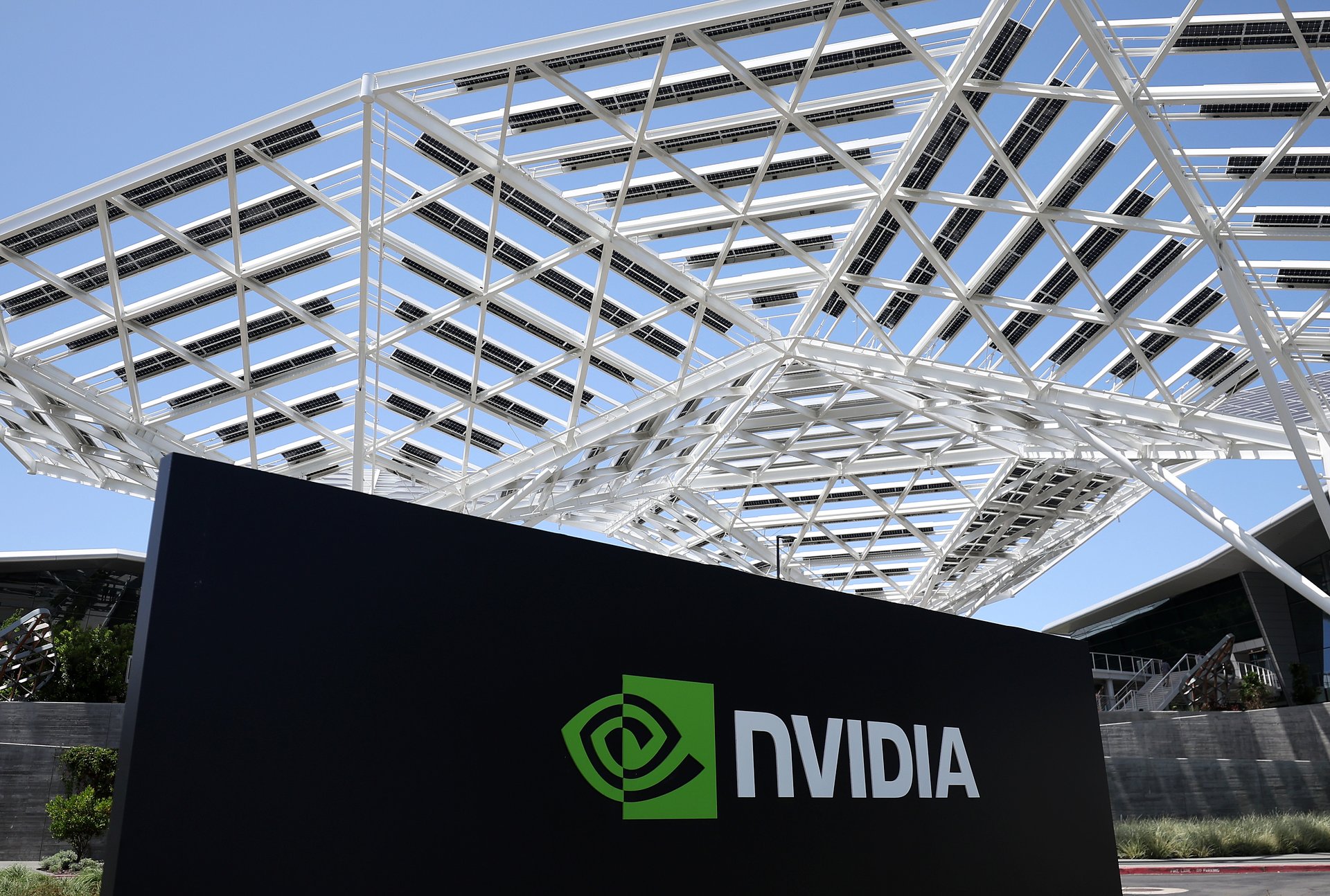Nvidia stock hits a record. The AI chipmaker has the biggest market cap on Earth again
After a brutal slide to start the year, Nvidia has clawed back all the way back and more — defying export bans, Chinese rivals, and shifting supply chains

Justin Sullivan/Getty Images
Not too long ago, Nvidia looked like it had lost momentum. After peaking in January, the AI chipmaker’s stock slid hard — dragged down by U.S. trade restrictions, intensifying competition from China, and a broader tech pullback. At one point in April, shares had fallen almost 40% from their highs, bottoming out just above $94.
Suggested Reading
Now? Nvidia stock is doing better than ever.
Related Content
Nvidia shares rose more than 4% Wednesday to close at a record-high $154.31, which topped January’s all-time closing high of $149.43. And the company reclaimed the crown of the world’s most valuable public company — topping Microsoft with a market cap of nearly $3.77 trillion.
The inflection point for Nvidia’s rally came in late May when the company posted a blowout first-quarter earnings report that beat expectations across the board, even after factoring in a $2.5 billion hit from U.S. export bans to China. CEO Jensen Huang has reaffirmed that the global appetite for AI chips is still expanding, despite geopolitical roadblocks. And demand has been bolstered by international partnerships, including deals to sell hundreds of thousands of GPUs to Saudi Arabia and the UAE.
Investors have listened.
Loop Capital this week raised its price target to $250, a Wall Street high. “It may seem fantastic that Nvidia’s fundamentals can continue to amplify from current levels,” Loop analyst Ananda Baruah wrote in a note, “but we remind folks: Nvidia remains essentially a monopoly for critical tech, and it has pricing (and margin) power.” The firm projects the AI chip market could reach $2 trillion by 2028 and sees Nvidia’s valuation potentially climbing from $3.6 trillion today to $6 trillion.
Not even recent reports that Huang is selling shares — part of a prearranged plan to offload more than $800 million worth of Nvidia stock — have rattled investors.
The broader tech trade is also working in Nvidia’s favor.
Bank of America says tech stock inflows last week hit their highest level in a year, helping lift the entire chip sector. Intel, AMD, and Broadcom all notched 3%-plus gains on Tuesday, while the Nasdaq 100 and Nasdaq Composite both closed at multimonth highs.
Of course, risks remain. Micron’s earnings — due after the bell on Wednesday — could move the market, especially if the memory supplier shows signs of stress. Nvidia relies on high-bandwidth memory to power its top-end GPUs, and any sign of a supply squeeze or pricing dip could weigh on the stock. And while demand has remained strong, there are still questions about whether Big Tech’s breakneck AI investment can keep up with investor expectations.
The real test, however, may come in August, when Nvidia reports second-quarter earnings. Analysts are bracing for a clearer look at how China’s export losses and continuing competitive threats are weighing on margins — even as the U.S. and its allies work to stem China’s semiconductor ambitions. In mid-June, Taiwan barred key companies from selling advanced chips and manufacturing tools to Huawei, SMIC, and other Chinese firms, tightening a chokehold already reinforced by U.S. export bans. But the pressure cuts both ways: Chinese companies have been accelerating the development of homegrown AI chips, threatening Nvidia’s long-term dominance in one of its largest markets.
Still, few companies have been able to defy gravity quite like Nvidia.
In three months, the company has bounced from a 52-week low to a record close. For now, at least, Wall Street seems to believe that the AI chip king is still firmly in control — and that its comeback is far from finished.
